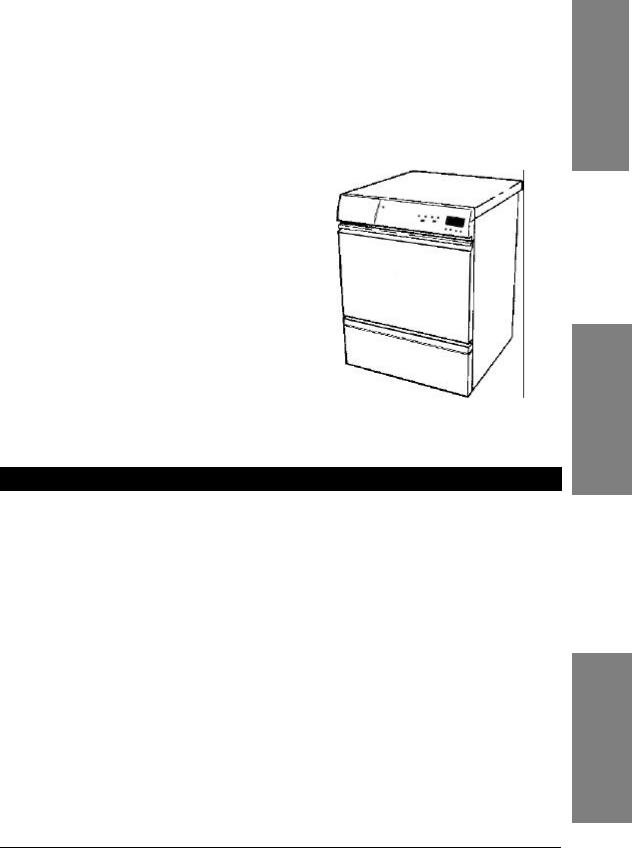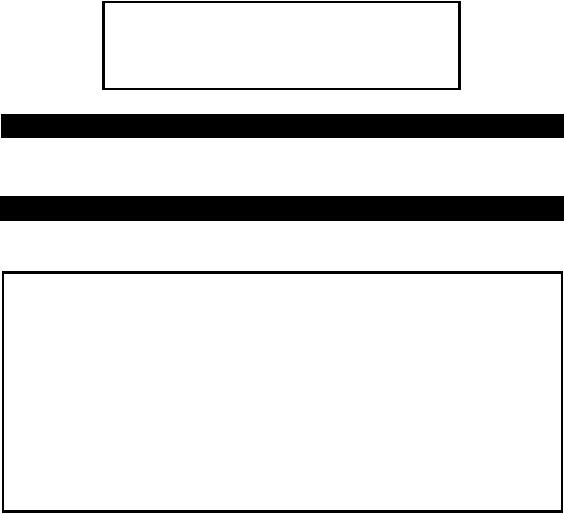Asko W660, W620, W640, W600 Manual

 ASKO
ASKO
WASHER USE AND CARE GUIDE
ENGLISH
|
|
|
|
|
|
|
|
|
|
om |
||
|
|
|
|
|
|
|
|
T! |
ce |
fr |
ing |
|
|
|
|
|
|
|
|
|
TAN |
operatit |
r |
||
|
|
|
|
|
|
OR |
fo |
|||||
|
|
|
|
IMP |
|
performanll ng |
|
|||||
|
|
|
|
|
|
|
|
|
|
|
|
|
|
|
|
|
|
|
est |
ad |
usi |
|
|
|
|
|
|
|
|
e |
b |
, re re |
|
|
|
|
||
T |
|
etth |
|
er |
befo |
|
|
|
|
|||
g |
washns . |
|
|
|
|
|||||||
o |
|
|
|
|
|
me |
|
|
|
|
||
|
instructiofi |
|
|
|
|
|||||||
|
ur |
|
|
|
|
|
|
|
|
|||
yo |
|
|
rst |
ti |
|
|
|
|
|
|||
|
|
e |
|
|
|
|
|
|
|
|||
|
|
|
|
|
|
|
|
|
|
|
||
|
th |
|
|
|
|
|
|
|
|
|
|
|
CONTENTS
Important Safety Instructions |
2 |
Child Safety Features |
2 |
ASKO Washer Features |
3 |
Preparing the Laundry |
4 |
The Detergent Drawer |
5 |
Detergents |
5 |
Fabric softeners |
6 |
Recommended Wash Temperatures |
6 |
Care and Cleaning Instructions |
7 |
Common Laundry Problems |
8 |
Fault Codes– W600/W620 |
9 |
Error Messages – W640/W660 |
9 |
Troubleshooting |
10 |
Customizing the Preset Programs – W640/W660 |
11 |
Installation Instructions |
15 |
ASKO Product Warranty |
17 |
Index |
18 |
FRANÇAIS
ESPAÑOL
SAVE THESE INSTRUCTIONS FOR FUTURE REFERENCE
Page 1

IMPORTANT SAFETY INSTRUCTIONS
To reduce the risk of fire, electric shock, or injury to persons when using your appliance, follow basic precautions, including the following:
♦Read all instructions before using the appliance.
♦Do not run appliance while you are out of the home.
♦Do not allow children to play on or in the appliance. Close supervision of children is necessary when the appliance is used near children.
♦Before the appliance is removed from service or discarded, remove the door to the washing compartment.
♦Do not reach into the appliance if the drum is moving.
♦Do not install or store this appliance where it will be exposed to the weather.
♦Do not tamper with controls.
♦Do not repair or replace any part of the appliance or attempt any servicing unless specifically recommended in the user-repair instructions or in published user-repair instructions that you understand and have the skills to carry out.
♦Do not add gasoline, dry-cleaning solvents, or other flammable or explosive substances to the wash water. These substances give off vapors that could ignite or explode.
♦Under certain conditions, hydrogen gas may be produced in a hot water system that has not been used for 2 weeks or more. HYDROGEN GAS IS EXPLOSIVE. If the hot water system has not been
used for such a period, before using a washing machine or combination washer-dryer, turn on all water faucets and let the water flow from each for several minutes. This will release any accumulated hydrogen gas. As the gas is flammable, do not smoke or use an open flame during this time.
WARNING!
Do not wash or dry articles that have been previously cleaned in, washed in, soaked in, or spotted with gasoline, dry-cleaning solvents, cooking oils, other flammable or explosive substances because they give off vapors that could ignite or explode.
WARNING!
This appliance must be properly grounded. Improper connection of the equipment grounding conductor can result in a risk of electric shock. Check with a qualified electrician or serviceman if you are in doubt as to whether the appliance is properly grounded.
The plug must be plugged into an appliance outlet that is properly installed and grounded in accordance with all local codes and ordinances.
NOTE: This manual does not cover every possible condition and situation that may occur. Use common sense and caution when installing, operating, and maintaining any appliance.
CHILD SAFETY FEATURES
CHILD-SAFE DETERGENT DRAWER
ASKO washers have a child-safety catch on the detergent drawer that can be engaged to prevent a child from opening the drawer and possibly coming into contact with the detergent or fabric softener. Refer to page 5 for instructions on how to engage the child-safe catch.
CHILD-SAFE TEMPERATURE KNOB
Models W600 and W620 have a child-safety catch that can be engaged to prevent children from tampering with the temperature knob. The catch is located below the temperature knob behind the edge of the control panel. To engage it, insert a flathead screwdriver in the slot on the catch. Press upwards as you turn the catch clockwise. When you release the catch is should protrude slightly below the control panel.
Once the catch is engaged, you must hold it up as you turn the temperature knob to the desired setting.
CHILD-SAFE START
You can program Models W640 and W660 not to start unless the Start button is held down for three seconds. This is to prevent children from inadvertently starting
the machine. Refer to page 14 for instructions on how to program this safety feature.
MORE CHILD-SAFETY TIPS
♦Laundry detergents are corrosive, so always keep them out of reach of children.
♦Should a child swallow detergent, give plenty to drink immediately, i.e., one or two glasses of milk or water. Do not try to induce vomiting. Seek medical advice immediately: 1-800-POISON1
♦Always close the door and start the appliance as soon as you put in the detergent.
♦Always turn the power off to the machine when it is not in use.
♦Always keep small children away from the machine when it is open. There may be some detergent residue left inside the machine.
♦If laundry detergent gets in someone’s eyes, rinse them with plenty of water for at least 15 minutes.
♦Do not allow children to use or play on or in the appliance.
Page 2

ASKO WASHER FEATURES
Your new energy-efficient ASKO washer is designed to give you maximum cleaning performance using less water, energy and detergent. To make the most of the washer’s functions and features, we recommend that you read this manual carefully before using your machine for the first time. For operating instructions, refer to the Quick Start Guide enclosed with this manual.
Below is an illustration of the parts and features of your ASKO washer.
Power Detergent and fabric button softener dispenser
Control
panel
door 
Front Outer door cover
(W620 and W660)
THE GLASS DOOR
To open the glass door, the power to the machine must be on and you must press the Door Open button (
 ). There will be a few seconds delay before the door opens.
). There will be a few seconds delay before the door opens.
Models W600 and W620
On these models, the Program Control knob must be at the end of a program (at the 12:00 position) to open the glass door. If you need to stop or interrupt a program after you start the machine, turn the Program Control knob to 10 (Drain). Any water in the machine will be pumped out. Make sure the Program Control knob is at the 12:00 position, then press the Door Open button (
 ) to open the door. To restart the washer, close the door, add detergent (if needed), and turn the controls to the desired settings.
) to open the door. To restart the washer, close the door, add detergent (if needed), and turn the controls to the desired settings.
Models W640 and W660
On these models, if you need to open the door during a wash or rinse cycle, press and hold Door Open for three seconds. The machine will stop and automatically drain enough water so the door can be opened safely. The program will resume when you close the door.
Refer to “The door won’t open” section in the Troubleshooting chart on page 10 for instructions on how to open the glass door in case of a mechanical failure.
THE OUTER DOOR (W620/W660)
The drop-down outer door is not just to improve the appearance of your ASKO washer. You can pile your
laundry on the door while loading and unloading the |
|
|
washer with complete confidence that the door will hold. |
ENGLISH |
|
|
|
|
SENSOR LEVEL CONTROL |
|
|
ASKO washers do not need high, medium, or low water |
|
|
level settings to compensate for different sized loads. |
|
|
ASKO washers have a Sensor Level Control (SLC) |
|
|
system designed to ensure the correct amount of water |
|
|
is pumped into the machine for any size load. It even |
|
|
compensates for fabric saturation, letting in more water |
|
|
if needed. This eliminates worry about selecting the |
|
|
right water level setting for each laundry load. |
|
|
|
||
|
|
|
TEMPERATURE CONTROL |
|
|
Because wash water temperature is a major factor in |
|
|
getting laundry clean, ASKO washers have built-in heating |
|
|
elements and a sensor that keeps the temperature to |
|
|
within +/-1° F of the selected program temperature. |
|
|
ASKO washers are programmed not to advance in a |
|
|
cycle until the selected water temperature is reached, |
|
|
so the length of the cycles may vary, depending upon |
|
|
the household cold water temperature, the amount of |
|
|
laundry in the washer, and the wash temperature setting. |
|
|
|
|
|
ENZYME STEP |
|
|
To successfully remove all dirt and stains from fabric, |
|
|
the enzymes in your detergent need to work at a |
|
|
temperature between 105° and 140° F for a longer time |
|
|
period. For this reason, the main wash cycle in a Normal |
|
|
wash program on ASKO washers is 43 minutes (plus |
|
|
the amount of time it takes to heat the water to the |
|
|
selected temperature). This longer wash cycle gives |
|
|
the enzymes in the detergent ample time to remove |
|
|
stains, eliminating the need for stain sprays and spot |
|
|
removers. |
|
|
The prewash option should be used only for heavily |
|
|
soiled loads. Starting the machine at the main wash |
|
|
stage will save about 25 minutes. |
|
|
|
|
|
ECONOMY (E2/ECO) OPTION |
|
|
This option extends the wash time by about 22 minutes. |
|
|
This extended wash time lets you use lower water |
|
|
temperatures (85°–100° F) and still get the same |
|
|
excellent results with lower energy consumption. This |
|
|
option is also excellent for getting out stubborn stains |
|
|
when used with a higher wash temperature. |
|
|
|
|
|
MORE RINSE CYCLES |
|
|
Most washers have only two or three rinse cycles; some |
|
|
have an option to add a fourth. ASKO washers have five |
|
|
rinses and a Super Rinse option that adds two more. |
|
|
ASKO washers get the soil and detergent out of your |
|
|
laundry that most other washers leave in. That’s why |
|
|
your whites will remain white and your colored fabrics |
|
|
will remain bright. |
|
|
The Super Rinse option is designed for people with |
|
|
sensitive skin or who are allergic to detergents. It can |
|
|
also be used for large, heavily soiled loads. |
|
|
Page 3

SPIN OPTIONS
ASKO washers have faster spin speeds than most other washers, which decreases the time it takes to dry your laundry by up to half. The spin speeds range from 600 rpm to 1600 rpm, depending on the model.
You can also turn the spin cycle off. Using this feature with the Wool/Hand wash program is a perfect substitute for hand washing.
PREPARING THE LAUNDRY
We believe ASKO washers clean better than any other washer available on the market. With proper attention to how you prepare your laundry items for washing, your wardrobe and linens will look like new for years.
SORTING THE CLOTHES
Sort clothes by fiber content, color, amount of soil, lint shedding properties (e.g., cotton, chenille, and terrycloth), lint attracting properties (e.g., permanent press, corduroy, velveteen, flannel and synthetics) and those requiring a delicate cycle (e.g., washable wool and silk, nylon).
CARE LABEL INSTRUCTIONS
Most clothes and other washable items have permanent care labels. Read these labels carefully! Care label instructions and warnings should be followed for the best cleaning results.
If the care label says "Wash Separately," the fabric is likely to lose color (excess dye) for the first few washings. To minimize the possibility of the color transferring to white or lighter colored items, wash new colored garments with items of similar color or separately. Bright reds and oranges on cottons are the dyes most likely to transfer colors to the wash load. Fluorescent colors should always be washed separately.
RECOMMENDED LOAD SIZES
To reduce wrinkling, you should determine the load size based on the type(s) of fabrics being washed. The chart below gives recommended load sizes for different fabrics.
Load Size |
Fabrics |
Full |
Cotton, linen |
|
|
Half |
Perm press, synthetics, acrylics |
|
|
Third |
Special finish cottons, machine |
|
washable wool, silk, acetates |
|
|
Cotton and Linen Fabrics
These items should be washed in full loads because the tumble action of the tub along with the gentle rubbing and lifting and falling movement of the clothes gives the best cleaning result.
Permanent Press Fabrics
These items need more room to move freely during washing for the most wrinkle-free results. Therefore, fill
ADVICE FOR PERSONS WITH SENSITIVE SKIN
ASKO washers are ideal for people allergic to detergent. Our Heavy, Normal and Light wash programs have five rinse cycles and a Super Rinse option that adds two more rinses. This ensures that all the detergent residue is rinsed out of your laundry.
As an extra precaution, you should use mild detergents and be careful not to use too much.
the machine only half full for permanent press loads. These items should have only a brief spin cycle and they should be removed promptly from the washer and put directly into the dryer or hung to dry.
Delicate Fabrics
More delicate fabrics, such as machine washable wool and silk, should only be washed in one-third size loads for the best results.
GENERAL LAUNDRY ADVICE
♦Read and follow the care instructions on new garments.
♦Sort laundry by the care instructions and color of the fabric.
♦Do no wash colored fabrics with white and lightcolored fabrics.
♦Wash fabrics that produce lint separately (such as towels).
♦Remove any sharp ornaments, pins or buckles to prevent snags.
♦Empty pockets and turn them inside out.
♦Close zippers and hooks to prevent snagging.
♦Tie sashes and strings to prevent tangling.
♦Mend any small rips to prevent them from enlarging.
♦Turn colored cotton garments, velvet and finer knitwear inside out before washing.
♦Turn delicate items, sweaters and T-shirts inside out to prevent pilling and to protect the prints.
♦Prewash severely soiled items.
♦Wash colored fabrics separately the first time.
♦Permanent press items should be washed in halfloads.
♦Thoroughly rinse down items, such as comforters (Super rinse).
♦Use fabric softener to eliminate static electricity in synthetic garments and to soften cotton.
♦Ironing lesser quality cotton items can reduce shrinkage.
Page 4

THE DETERGENT DRAWER
The detergent drawer on ASKO washers automatically dispenses the detergent and fabric softener at the appropriate times. Simply pour the measured amounts of detergent and softener into the proper compartments (as illustrated) and close the drawer.
Prewash detergent
Main wash
detergent
Fabric softener
Pullout
handle Child-safety catch
NOTE: To avoid oversudsing, do not put detergent in the prewash compartment unless you are using one of the Heavy wash programs which has a prewash cycle.
We recommend that you don’t use bleach in your ASKO washer. The tumbling wash action, temperature control options, extended wash times and proper amount of detergent are sufficient to remove most stains.
Child-Safe Catch
All ASKO 600-series washers have a child-safe catch on the detergent drawer that can be engaged to prevent a child from opening the drawer and possibly coming into contact with the detergent or fabric softener.
The safety catch is the red plastic piece on the back right side of the pull-out handle. To engage the catch, open detergent drawer a little then pull the catch forward and release it. Once the catch is engaged, you must push it to the left each time you open the detergent drawer.
To disengage the catch, push it to the left then back.
ENGLISH
DETERGENTS
Laundry detergents are available in low-, normaland high-sudsing formulas. A detergent´s ability to clean is not relative to the amount of suds it produces. Excess suds in a front-loading washer actually interfere with the cleaning because they cushion the tumbling action. Also, high-sudsing detergents are more difficult to completely rinse out.
The use of anything other than a low-sudsing detergent can cause severe oversudsing, which could cause suds to backup through the detergent compartment and run down the front of the washer onto the floor. If oversudsing occurs, run the wash through one or more rinse programs until all items are thoroughly rinsed. Remove the laundry then run the washer through a Normal wash program to get rid of any remaining detergent.
Should oversudsing occur, the machine will indicate an error code or message. (See page 9.)
LIQUID DETERGENTS
We don’t recommend liquid detergents because they tend to produce more suds than powder detergents when used in water temperatures of 150° F or higher. If you should try a liquid detergent, start with a very small amount, such as 1 to 2 tablespoons. Also, liquid detergent can be used for all programs without prewash, so add it into the main wash compartment.
Should you prefer to use a liquid detergent, we have provided a partition piece with the detergent drawer specifically for use with liquid detergents. Insert the partition in the slot at the back of the main wash compartment before you pour in the liquid detergent.
RECOMMENDED POWDER DETERGENTS
ASKO washers use 50% to 75% less detergent than most other washers. This is because of their low water consumption and the fact that all the wash water is repeatedly circulated through the laundry, ensuring that all the detergent is fully utilized. We recommend that you use powder detergents made specifically for frontloading washers. These are sometimes called HE (High-Efficiency) detergents. Listed below are some low-sudsing powder detergents that have been successfully tested in ASKO washers:
♦ |
Fab |
♦ |
All |
♦ |
Amway SA8 |
♦ |
Tide HE |
♦ |
Fresh Start |
♦ |
Wisk HE |
We recommend that you do not use any powder detergent that doesn’t wash completely out of the detergent drawer.
AMOUNT OF DETERGENT TO USE
The amount of detergent needed varies among the different brands, but for most detergents, you need only one or two tablespoons. Using too much detergent can result in detergent residue being left in your clothes, which can cause them to appear gray or dingy. You should start with a small amount of detergent and increase it only if the cleaning results are unsatisfactory.
Additionally, you should never put detergent in the prewash compartment unless you are using a wash program that has a prewash cycle. This could cause excess foaming, which could damage the machine.
The amount of detergent needed can also depend on the hardness of the water in your area. See the “Detergent Amounts Based on Water Hardness” section on the next page for more details.
Page 5

Detergent Amounts Based on Water Hardness
The amount of detergent needed can vary due to differences in water hardness. To determine the water hardness in your area, contact your local water utility or area water softening company. The harder the water, the more detergent you may need. Refer to the chart below for the recommended detergent amounts based on water hardness. Remember, you should adjust the amount of detergent you use by small amounts until you find the correct amount.
Note that 12 grains and higher is extremely hard water and detergent alone may not be enough. You may need
to use a water softener to maximize the performance of your washer. Also, in areas with extremely hard water (9+) you may need to wash at lower temperatures to prevent hard water deposits from forming in the tank and wash system.
Different brands of detergent have different amounts of phosphorous for softening water. If you have hard water and use a detergent with less than 8.7% phosphorous content, you may need to use more detergent or use a detergent with a higher phosphorous content.
Recommended Detergent Amounts
Based on Water Hardness
|
|
Detergent Amounts |
|||
Water Hardness |
Prewash |
|
Main Wash |
||
|
|
|
|
|
|
Soft (0-3 grains per gal.) |
1 |
teaspoon |
1 |
to 1-1/2 tablespoons |
|
Medium (4-8 grains per gal.) |
1 |
teaspoon |
1 |
to 2 |
tablespoons |
Hard (9+ grains per gal.) |
1 |
teaspoon |
2 |
to 3 |
tablespoons |
|
|
|
|
|
|
FABRIC SOFTENERS
Fabric softeners are available in several concentrations. We recommend that you use only two tablespoons of
fabric softener. If more softening is desired, try adding slightly more the next time.
RECOMMENDED WASH TEMPERATURES
Different fabrics require different wash temperatures. The table below gives recommended wash temperatures
for different fabrics as well as recommended programs, load sizes, and spin options.
|
|
Wash |
Wash |
Load |
Spin |
|
|
Fabric Type |
Temp. |
Program |
Size (1) |
Options (2) |
|
|
White cotton w/out elastic |
140–205° F |
Normal |
Full |
Long spin, high rpm |
|
|
and/or decorative trim |
|
|
|
|
|
|
White cotton w/elastic |
120–140° F |
Normal |
Full |
Long spin, high rpm |
|
|
and/or decorative trim |
|
|
|
|
|
|
Colored cotton |
120–140° F |
Normal |
Full |
Long spin, high rpm |
|
|
Linen (white and colorfast) |
120–140° F |
Normal |
One-half |
Short spin, low rpm |
|
|
Cotton/polyester blends |
105–120° F |
Normal/Permanent press |
One-half |
Short spin, low rpm |
|
|
Polyester/acrylic blends |
105–120° F |
Normal/Permanent press |
One-half |
Short spin, low rpm |
|
|
Rayon and acetate |
105° F |
Delicate/Wool |
One-half |
Short spin, low rpm |
|
|
Washable silk and nylon |
85° F (cold) |
Delicate/Wool |
One-third |
Short spin, low rpm |
|
|
Washable wool and |
85–105° F |
Delicate/Wool |
One-third |
Short spin, low rpm |
|
|
wool blends |
(cold) |
|
|
|
|
|
|
|
|
|
|
|
|
Handwash wool & silk (3) |
85° F (cold) |
Delicate/Wool |
One-third |
Short spin, low rpm |
|
NOTES:
(1)The load size should be determined by the type of fabric being washed. (See page 4.)
(2)Spin speed options are not available on all models.
(3)Some hand-washable wool and silk items should not go through a spin cycle. These items should be removed from the washer then pressed out in a terry towel to remove excess water before being hung up or laid flat to dry.
Page 6
